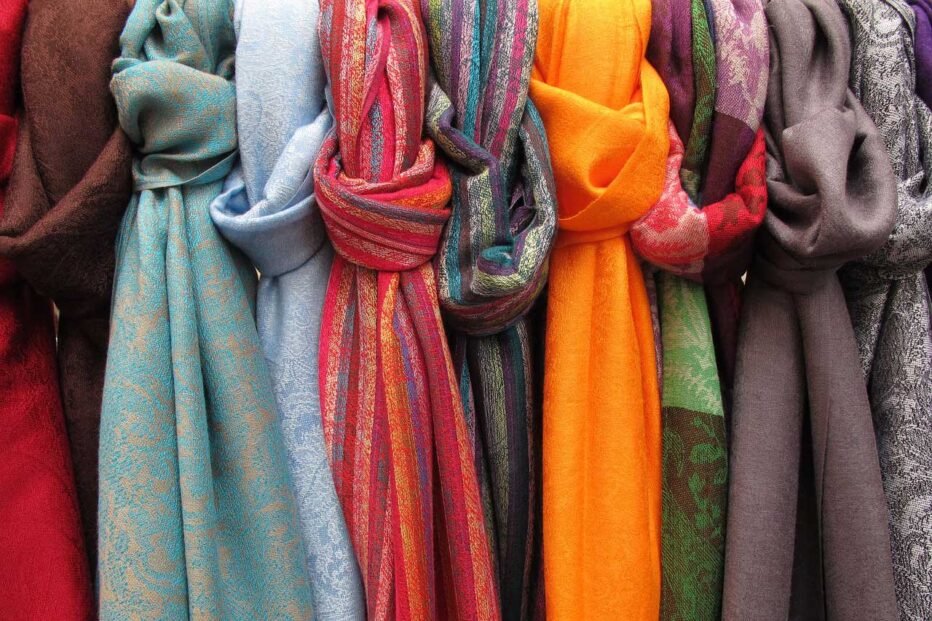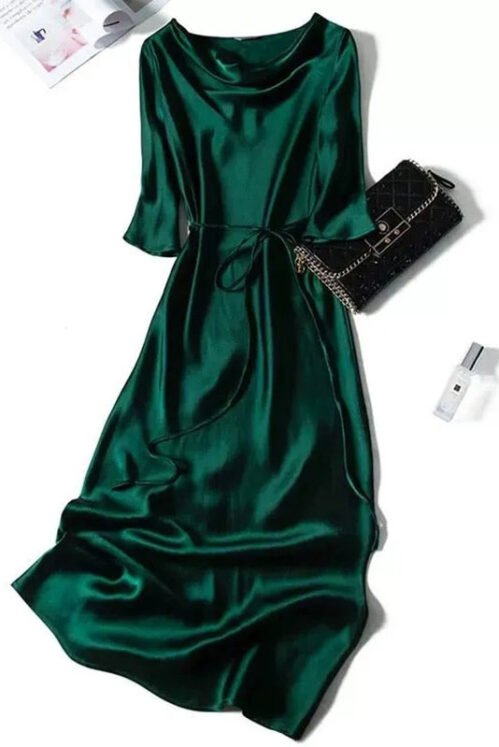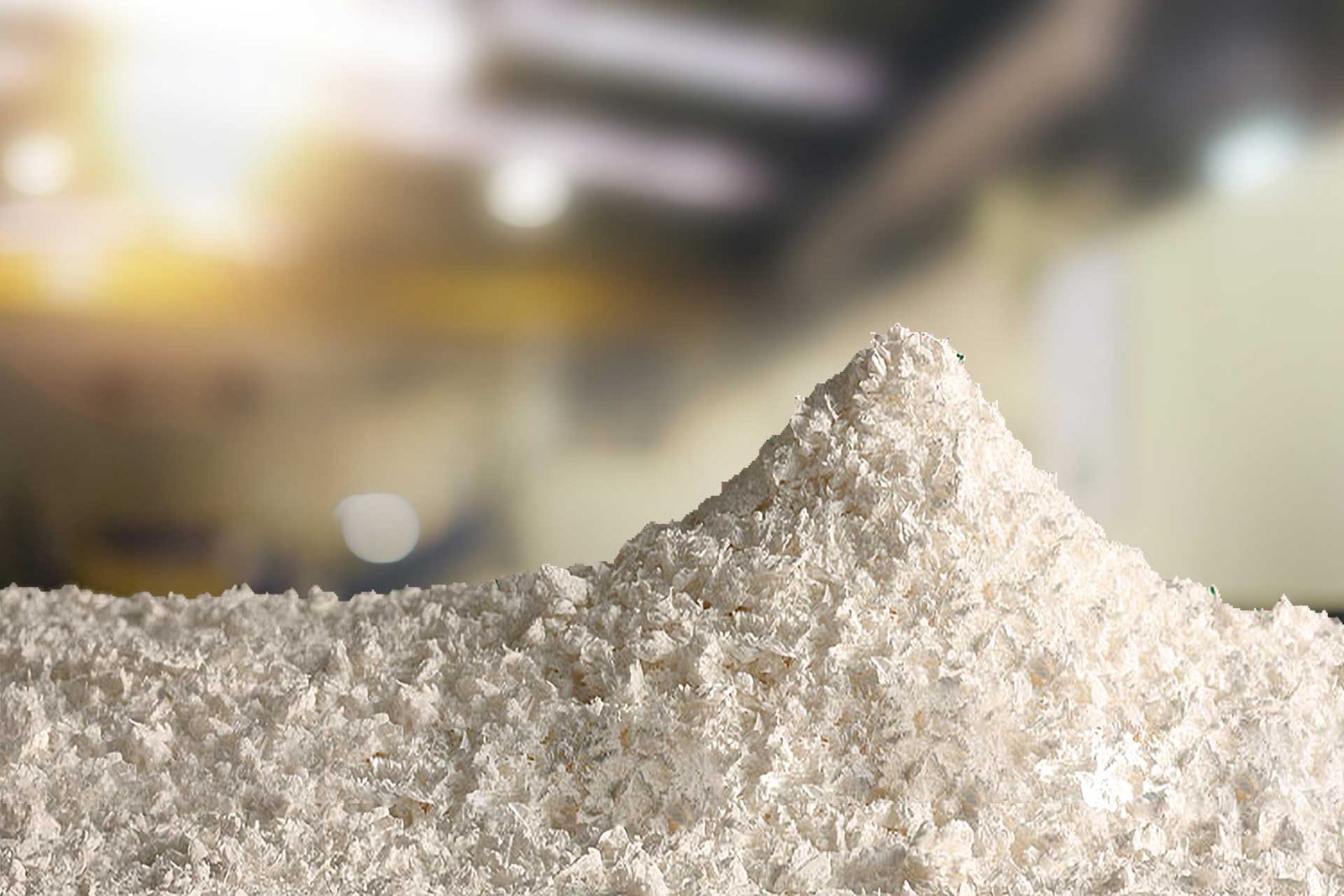
Description
A silky, soft semi-synthetic material that is often blended with other fibers.
Acetate is one of the earliest semi-synthetic fibers. It is produced by treating wood pulp or cotton linters with acetate acid and acetylating hydroxyl groups. With a silky, soft texture and a lustrous sheen, it is commonly used as an alternative to silk. While it shares many similar properties to rayon, they differ in their production process. It is also commonly blended with other fibers.
Background
Story
First used in France as a varnish for aircraft, acetate was later developed as a fiber in Great Britain in 1923, and as a fabric in the United States in 1924. Certain fumes and pollutants caused the fabric to fade or discolor, meaning it was never mass produced. While chemists managed to solve the discoloration
Manufacturing
Just like paper, cellulose acetate and triacetate are made from various plants: cotton linters (short fiber down), wood pulp , etc.
The cellulose is mixed with acetic acid and acetic anhydride so as to obtain a precipitate. After being dried, the “flakes” formed are dissolved in a solvent (acetone or other). A viscous cellulose acetate solution is then obtained which can be extruded and spun . It can also be used as is as a polymer varnish, or molded to make objects.

Expertises
Characteristic
• Smooth and soft
• Drapes with a graceful flow
• Highly breakable, especially when wet
• Heat sensitive and prone to melting
• Low elasticity
• Pill resistant
• Moisture wicking and fast drying
• Mildew and mold resistant
• Requires special dyes to be colorfast
• Prone to wrinkle, suitable for pleating
• Gathers static electricity
Acetate fiber uses
Acetate fibers are the second most used man-made cellulosic fiber after viscose globally. They are semi-synthetic fibers and very cheap to produce.
Acetate fibers are the second most used man-made cellulosic fiber after viscose globally. They are semi-synthetic fibers and very cheap to produce.
Man-made cellulosic fibers like acetate, viscose, cupro, or lyocell are slowly replacing petroleum-based synthetic fibers such as nylon, acrylic, and polyester.
Acetate fabrics are regularly used in fashion to produce clothing and accessories because they are smooth, sheen, and affordable. They resemble luxurious silk.
In the textile and apparel industry, acetate fabric is often used to make knitwear, evening dresses, wedding attires, formal shirts, suits, blouses, coats, sweaters, sportswear, hats, and undergarments.
Types of acetate fibers
Acetate fibers refer to fibers made of cellulose acetate. There is a difference between acetate and triacetate fibers. There are separated based on the number of cellulose hydroxyl groups that are acetylated.
The most common form of cellulose acetate fiber is classified as diacetate or secondary acetate. It has an acetate group on approximately two of every three hydroxyls. It contains at least 76% but no more than 92% by weight of acetylated cellulose hydroxyl groups.
Fibers that contain at least 92% by weight of acetylated hydroxyl groups are called triacetate or triacetate cellulose. Triacetate fiber is often blended with wool to mix heat retention and quick-drying properties. It’s also used in sportswear and other garments that keep their shape because of its low moisture absorption.
How is acetate fiber made
Acetate is manufactured by deconstructing wood pulp into a purified fluffy white cellulose using acetic acid, acetic anhydride, sulfuric acid, and acetone.
Acetate fibers can also be manufactured by treating cotton linters, the relatively short fuzz left on cottonseed after the cotton ginning process.
Treating cellulose with acetic acid produces secondary acetate fibers or acetone that can be converted into triacetate using acetic anhydride and an acid catalyst, such as sulfuric acid.
The resulting cellulosic solution is extruded by spinning to form filaments that are finally spun into acetate fibers. Spinnerets transform the viscous solution into acetate fibers.
Social
12k followers
30k likes
Youtube
22k subscribers
8k followers
Have a project in mind?
If you have a great idea, reach out to me. Whether it is a small or big project, I will listen first and get back to you with a plan.

